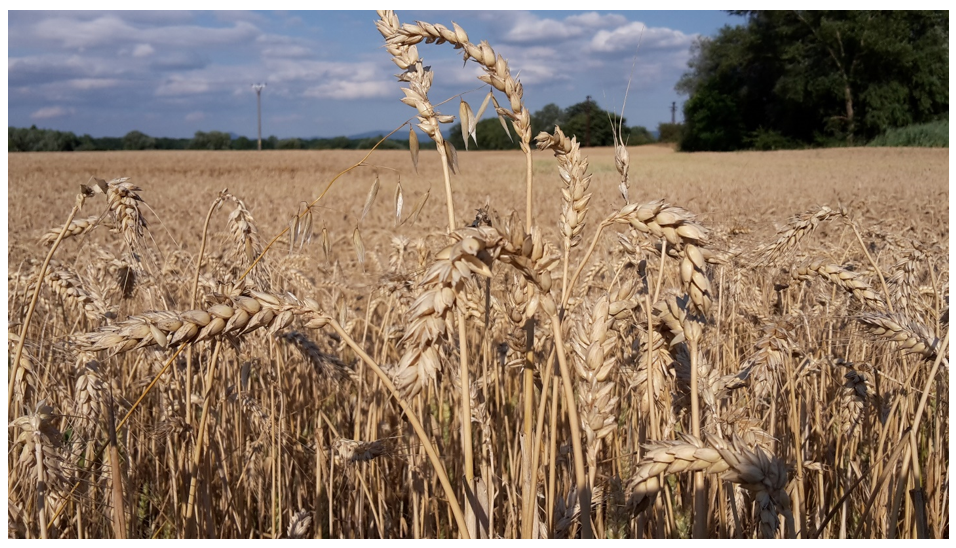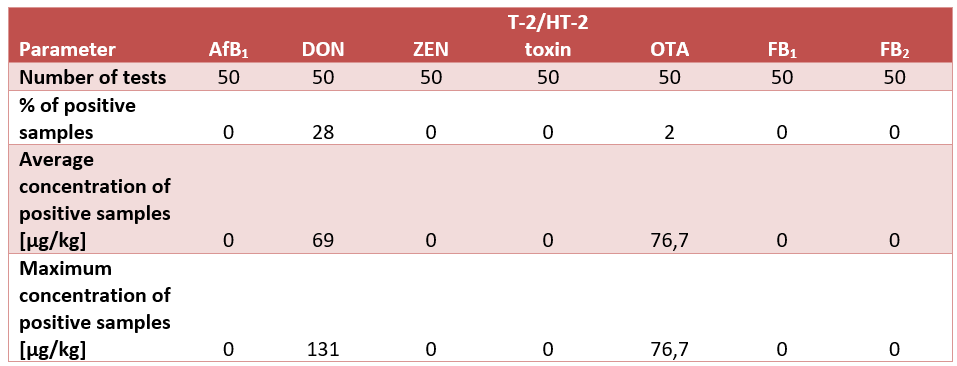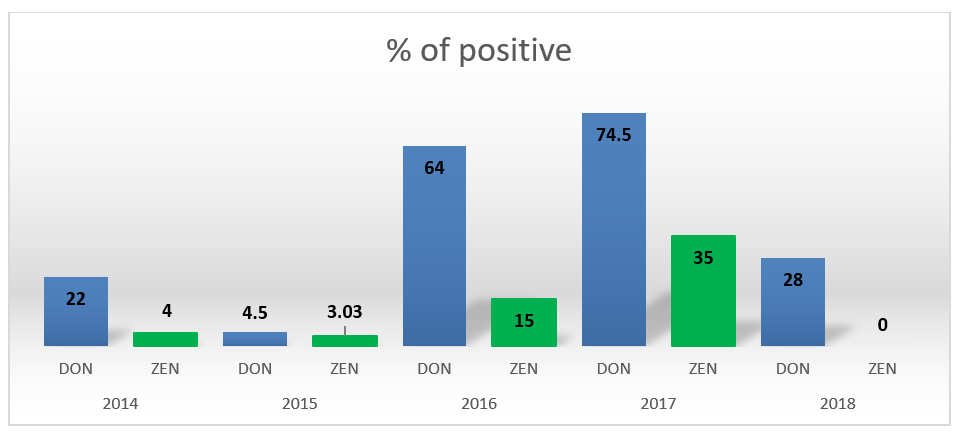



Nutriad Great Britain and Ireland 2018 mycotoxin survey in wheat
The presence of mycotoxins in feed and foodstuffs is an important concern for human and animal health. Aspergillus, Fusarium and Claviceps species of fungi are ubiquitous in nature and under ideal conditions, often infect crops and forages in the field, during storage, shipment and processing.Author: Radka Borutova; Business development manager at Nutriad International
Mycotoxins can cause serious health problems in animals and their presence in agricultural commodities may result in serious economic losses. Mycotoxins are also suspected of causing a variety of human diseases, including some forms of cancer. It has been estimated that mycotoxin-contaminated grains cost grain handlers and the livestock industry several hundred million dollars annually (CAST, 2003).
Picture 1: Wheat harvested in Western Europe 2018
©Copyright: Radka Borutova, Nutriad International
The 2018 Nutriad mycotoxin survey covered 50 wheat samples from across Great Britain and Ireland. All samples were collected directly from farms or animal feed production sites almost immediately after the harvest when the probability that some storage mycotoxins such as ochratoxin A (OTA) will have developed was low. Sample providers were advised to follow the principles of good sampling (Richard, 2000). Analytical personnel and/or laboratory staff were not involved, and therefore, did not influence any part of this procedure.
350 analyses were conducted to test for the presence of the 7 mycotoxins most frequently found in agricultural commodities intended for animal production. The survey provided insight into the incidences of aflatoxin B1 (AfB1), zearalenone (ZEN), deoxynivalenol (DON), T-2 toxin, HT-2 toxin, fumonisins (FB1 + FB2) and OTA.
All 7 mycotoxins were analysed by liquid chromatography tandem mass spectrometry (LC MS/MS). For the purpose of data analysis, non-detection levels were based on the limits of quantification (LOQ) of the test method for each mycotoxin: AfB1 <1 μg/kg; ZEN <15 μg/kg; DON <50 μg/kg; FB1 <20 μg/kg; FB2 <20 μg/kg; OTA <1 μg/kg; T-2/HT-2 toxin <10 μg/kg. Typically, the levels of DON and ZEN in wheat tend to be lower in Northern England and Scotland, moderate in Western England, Wales and Ireland and highest in Southern and South-Eastern England.
Results
The results show that 28% of wheat samples were contaminated with DON and none of the samples contained AfB1, ZEN, T-2 toxin, HT-2-toxin nor FB1 and FB2. The average concentrations of all identified mycotoxins were low while the highest concentration of DON found in 1 of the samples reached only 131 μg/kg. One sample was contaminated with OTA and its concentration was 76,7 μg/kg (Table 1).
Table 1 – Mycotoxin contamination of wheat in Great Britain and Ireland
Abbreviations: AfB1=aflatoxin B1; DON=deoxynivalenol; FB1=fumonisin B1; FB1=fumonisin B2, OTA=ochratoxin A; ZEN=zearalenone
Comparing DON and ZEN contamination levels of wheat in 2014, 2015, 2016, 2017 and 2018, it is clear that the contamination levels in 2018 are comparable with the levels in 2014 (Figure 1).
Figure 1 – Comparison of percentage of positive samples in 2014, 2015, 2016, 2017 and 2018 (>LOQ)
Conclusion
The Nutriad 2018 mycotoxin survey in Great Britain and Ireland concluded that the year’s harvest of wheat is of good quality in terms of mycotoxin contamination. The quality of wheat is similar to that of 2014 and significantly better than in 2016 and 2017. However, based on the results of this survey conducted immediately after the 2018 harvest, the 2018 wheat crop in Great Britain and Ireland should not automatically be considered safe for inclusion into finished feed rations for all animal species and a degree of vigilance is prudent.
Vigilance is always advisable as cereals in animal feeds originate from many sources. Some South European cereals harvested in 2018 have been shown to be contaminated with medium to high concentrations of aflatoxins. The last possible line of defence is the detoxification of mycotoxins in vivo. The addition of proven mycotoxin deactivators to animal feeds is a very common method to prevent mycotoxicosis and is an effective strategy to keep mycotoxin risk low under any and all conditions.
Nutriad delivers products and services to over 80 countries through a network of sales offices and distributors. These are supported by 4 application laboratories and 5 manufacturing facilities on 3 continents. Find out more at http://nutriad.com/
References
CAST, 2003. Mycotoxins: Risks in Plant, Animal and Human Systems. Task Force Report No.139. Council for Agricultural Science and Technology. Ames, IA.
Richard, J., 2000. Sampling and sample preparation for mycotoxin analysis. Romer® Labs Guide to Mycotoxins. 2. Romer® Labs Inc., 1301 Stylemaster Drive, Union, MO, USA 63084-1156.











